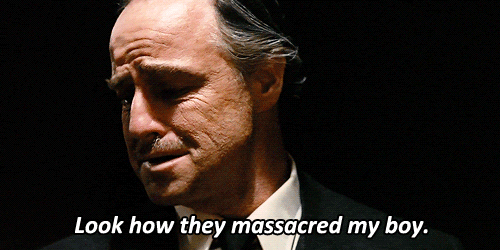Hands off my Lines! How Substack Reformats Your Poetry
How Substack (and all other online publications) will often reformat your poems away from how you've designed them. (And how they could easily fix it!)
The Problem
So you’ve worked for quite a while on your poem. You’ve spent weeks agonizing over an astonishingly small amount of words, and finally… it’s ready. Or at least you’ve decided that it needs to be ready (whether it really is or not). Like a dad sending his kid off to college, you get ready to ship it off to the world to see what it can do. You click that “Publish” button and hear your phone ping with the alert.
And then you immediately check that very post on your phone (to make sure you didn’t misspell “unrequited”) and find that something terrible has happened.
Your lines have been wrapped!! (dramatic explosions heard off in the distance)
Due to the size constraints of so many phones (and even tablets/desktops), your lines of poetry will often be too long to fit within the width of the content space. The publisher (in this case, Substack) has only one choice, and that is to wrap that line of poetry onto the next line.
This is a perfectly acceptable solution for almost all types of written content except for poetry. In poetry, the line as a complete, uninterrupted unit is of critical value. In rhymed poetry, the end of the line contains the rhymed word which will audibly (and visually) link to the following lines that rhyme with it. But if that line is wrapped these connections are devastated and the visual presence of the poem is weakened.
See how this type of formatting has almost ruined one of my sonnets (Holy War), which I screenshot off of my phone from Substack.
The visual presence of the poem has been completely ruined… Some lines are wrapped while other ones are not. The same thing would be done to Poe’s “The Raven,” were I to paste the first stanza into a Substack “poetry” block.
Once upon a midnight dreary, while I pondered, weak and weary,
Over many a quaint and curious volume of forgotten lore—
While I nodded, nearly napping, suddenly there came a tapping,
As of some one gently rapping, rapping at my chamber door.
“’Tis some visitor,” I muttered, “tapping at my chamber door—
Only this and nothing more.”“The Raven,” written in a hearty trochaic octameter, is a bit of a stretch for any publisher. But I still find that this kind of wrapping happens to about 60% of iambic pentameter lines.
And though I primarily write formal verse, the effects are even worse for the Free Verse poet! Indentation and line breaks are some of the core elements of the free verse poem. But when viewed online, I suddenly have no assurance concerning whether the poet meant to enjamb that new line, or if it was just too plain long for the website to handle.
This is a major problem because, as readers, our eyes subconsciously scan ahead to see what is coming. We can tell how long the line is, how much breath we need to complete the phrase. We can see the shape and similarity of the words, anticipating the punctuation that drastically determines the meaning of the sentence. The poem exists visually as much as it does audibly and in its sense.
The Fix
As far as I’m concerned, there are only two options to fix this, none of which Substack does. The first is a temporary user fix, the second is more serious developer fix.
(1) Turn your phone sideways. This is a nice hack for the reader to give themselves more horizontal space for the poem they are reading. Unfortunately, the Substack (Android) app does not currently support horizontal rotation.
(2) Turn off wrapping and provide a horizontal scroll-bar. In this way, the lines for each poem will never wrap; the user will instead have to scroll to the right to read the ends of each line. I find that this is only a small inconvenience since I am already scrolling with my fingers.
As for point #2, I’ve already implemented it over on my primary blog. This took a bit of effort in creating an HTML block for my poetry, but I’m very happy with the results. To see a direct comparison, using my Holy War poem, follow both links below to see how my site formats the poem compared to Substack.
I love that Substack already has a dedicated “Poetry” block in their editor. I just think that this could be a great addition to that functionality. If Substack wants to be serious about providing a place for poets to publish their writing, then proper formatting of poems could be a massive selling point. If this post makes it before the eyes of any Substack developers, I would just say, humbly… ever so respectfully… YOU’RE SO CLOSE!
<ahem>
Anyway, please let me know if you agree, or if these concerns are just irrational and I need to take a hike. If you do agree, share it out so that it could potentially get seen by whomever in Substack could make this call.





A solution I’ve implemented on Opol is to indent the wrapped line.
Here is an example:
https://opol.space/@lizziehernandez/poems/783d26dd-d11f-494c-998f-5a409920726e
could you provide insight into the html code you used?